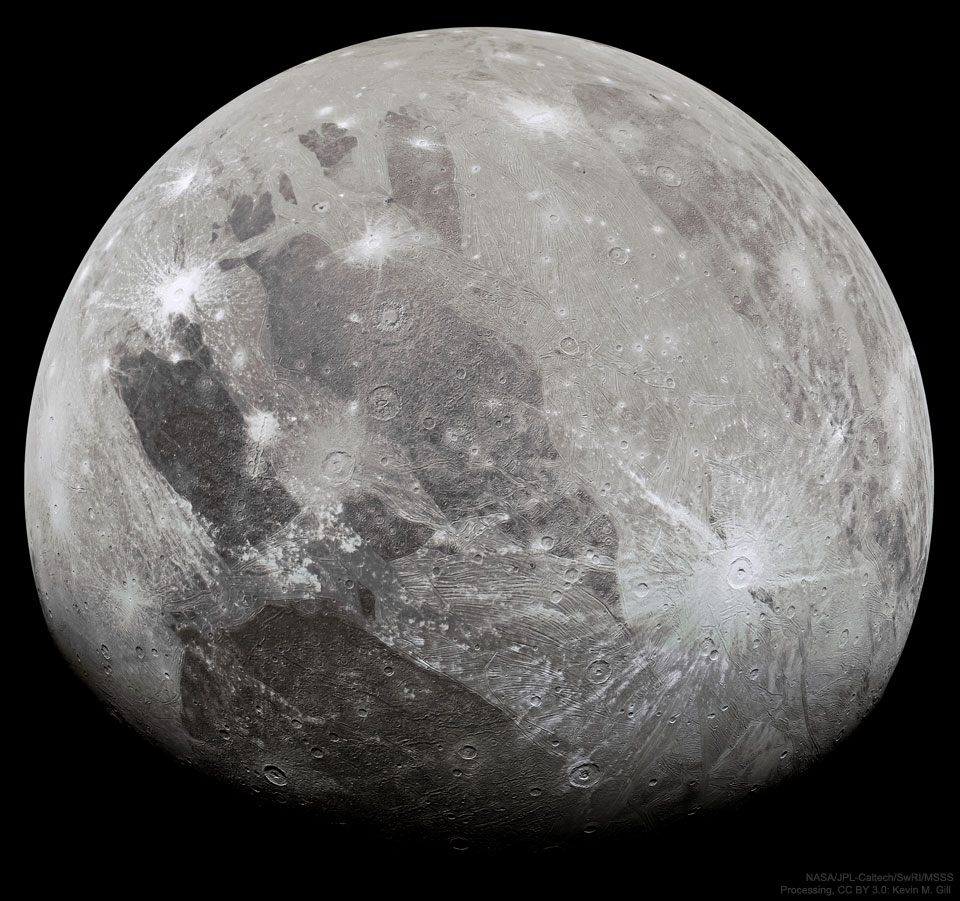티스토리 뷰
NASA의 오늘의 우주사진 (2021-06-14)
대디스 2021. 6. 14. 19:19목차
안녕하세요, 대디스입니다. 오늘은 NASA에서 어떤 우주의 모습을 비춰줄까요?
먼저 사진부터 감상하시죠~

이 사진의 제목은 Ganymede from Juno 입니다. NASA에서 공식적으로 제공한 설명을 보시죠.
What does the largest moon in the Solar System look like? Jupiter's moon Ganymede, larger than even Mercury and Pluto, has an icy surface speckled with bright young craters overlying a mixture of older, darker, more cratered terrain laced with grooves and ridges. The cause of the grooved terrain remains a topic of research, with a leading hypothesis relating it to shifting ice plates. Ganymede is thought to have an ocean layer that contains more water than Earth -- and might contain life. Like Earth's Moon, Ganymede keeps the same face towards its central planet, in this case Jupiter. The featured image was captured last week by NASA's robotic Juno spacecraft as it passed only about 1000 kilometers above the immense moon. The close pass reduced Juno's orbital period around Jupiter from 53 days to 43 days. Juno continues to study the giant planet's high gravity, unusual magnetic field, and complex cloud structures. Last week's solar eclipse: Notable images submitted to APOD
오늘도 광활한 우주 앞에 인간이 얼마나 작은 존재인지 깨닫게 되네요.
저는 내일도 더 좋은 사진과 함께 돌아오겠습니다, 행복한 지구여행 되세요!
'오늘의 우주사진' 카테고리의 다른 글
| NASA의 오늘의 우주사진 (2021-06-16) (0) | 2021.06.16 |
|---|---|
| NASA의 오늘의 우주사진 (2021-06-15) (0) | 2021.06.15 |
| NASA의 오늘의 우주사진 (2021-06-11) (0) | 2021.06.11 |
| NASA의 오늘의 우주사진 (2021-06-10) (0) | 2021.06.10 |
| NASA의 오늘의 우주사진 (2021-06-09) (0) | 2021.06.09 |